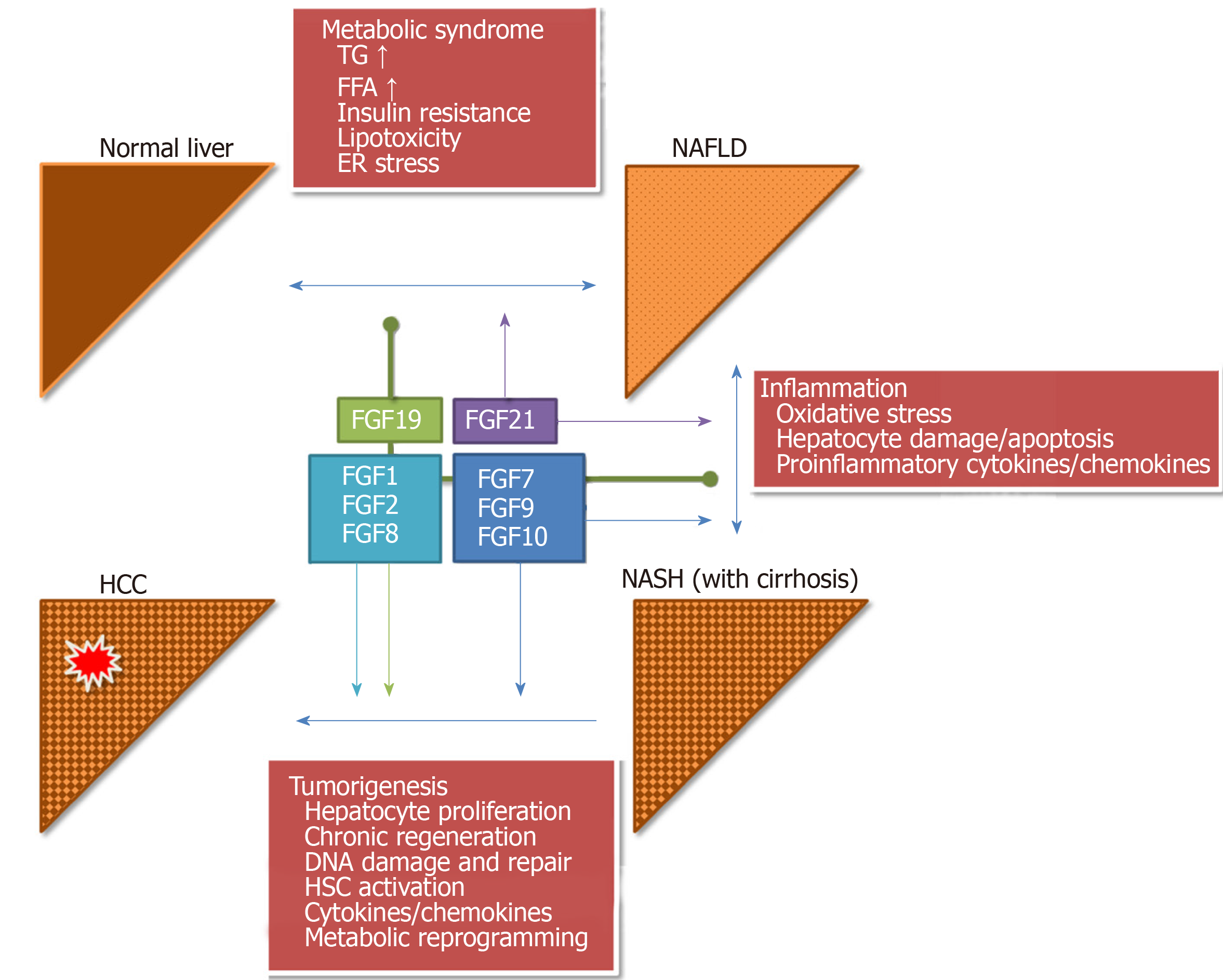Copyright
©The Author(s) 2020.
World J Gastroenterol. Jan 21, 2020; 26(3): 279-290
Published online Jan 21, 2020. doi: 10.3748/wjg.v26.i3.279
Published online Jan 21, 2020. doi: 10.3748/wjg.v26.i3.279
Figure 1 Role of fibroblast growth factor signaling in non-alcoholic fatty liver disease, non-alcoholic steatohepatitis and progression to hepatocellular carcinoma.
Fibroblast growth factors (FGFs) mediate the key pathogenetic processes linked to development of non-alcoholic fatty liver disease (NAFLD) (metabolic disturbances), non-alcoholic steatohepatitis (NASH) (chronic inflammation) and hepatocellular carcinoma (HCC) (chronic regeneration). FGF21 is mostly involved in mediating metabolic effects during NAFLD and NASH progression, while paracrine FGFs (FGF7, 9, 10) activate hepatocyte proliferation and regeneration processes. FGF19 can inhibit these processes at early stages but may have pro-tumorigenic properties during later disease phases. FGF1, FGF2 and the FGF8 family (FGF8, FGF17, FGF18) mediate HCC formation by supporting angiogenesis, matrix modulation via hepatic stellate cells activation and increasing tumor cell survival. Pointed arrow heads: Activation; Rounded arrow heads: Inhibition. FGF: Fibroblast growth factor; NAFLD: Non-alcoholic fatty liver disease; NASH: Non-alcoholic steatohepatitis; HCC: Hepatocellular carcinoma; TG: Triglycerides; FA: Fatty acids; ER: Endoplasmic reticulum; HSC: Hepatic stellate cells.
- Citation: Ocker M. Fibroblast growth factor signaling in non-alcoholic fatty liver disease and non-alcoholic steatohepatitis: Paving the way to hepatocellular carcinoma. World J Gastroenterol 2020; 26(3): 279-290
- URL: https://www.wjgnet.com/1007-9327/full/v26/i3/279.htm
- DOI: https://dx.doi.org/10.3748/wjg.v26.i3.279









